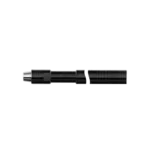When it comes to tools, there’s a vast array of options available, and navigating them can feel overwhelming, especially if you’re not familiar with the essentials. This guide is designed to help you understand the basic tools that every household or professional should have and why they’re indispensable. By the end, you’ll be equipped with knowledge that can make your projects smoother, quicker, and more enjoyable.
- Screwdrivers
Screwdrivers are one of the most used tools, and for good reason—they’re necessary for tightening or loosening screws, which are used in almost every piece of furniture or device you encounter. There are two basic types you should have:
Flat-head screwdriver: This is used for slotted screws. Although it’s one of the oldest designs, many modern fixtures still use flat-head screws.
Phillips-head screwdriver: More common nowadays, the Phillips head screwdriver fits screws with a cross-shaped indentation, offering more torque and a more secure fit.
You can often buy a set with various sizes, ensuring you’re covered for most jobs. Some sets even come with interchangeable heads, giving you more versatility with fewer pieces.
- Hammer
The hammer is the quintessential tool for any toolkit. It’s used for driving nails into wood, breaking objects apart, or even reshaping metal. The most common type for general use is the claw hammer, which has a head for pounding on one side and a curved, claw-like back to help remove nails. Whether you’re hanging pictures, assembling furniture, or doing more extensive home repairs, a hammer is a must-have.
For those working with heavier materials or in construction, a sledgehammer might also be needed, though for most users, a claw hammer is sufficient for day-to-day needs.
- Pliers
Pliers are an essential tool for gripping, twisting, bending, or cutting wire and other materials. There are several types of pliers, but a couple of the most common ones are:
Slip-joint pliers: These are adjustable and can handle a wide variety of tasks, from gripping objects to turning nuts and bolts.
Needle-nose pliers: Perfect for more delicate work, needle-nose pliers allow you to reach into tight spaces and manipulate small objects with precision.
Having a couple of different types of pliers ensures you’ll have the right grip for almost any task.
- Adjustable Wrench
Wrenches are used for gripping and turning nuts and bolts, and while there are several types available, an adjustable wrench is one of the most versatile. Rather than having to buy a set of wrenches of different sizes, an adjustable wrench allows you to alter the size of the opening to fit a range of nuts and bolts. This makes it incredibly useful for plumbing, automotive work, and even assembling furniture. - Tape Measure
Precision is key to any project, and that’s where a tape measure comes in. Whether you’re hanging shelves, cutting materials, or measuring a room for new furniture, a retractable tape measure is the ideal tool to ensure accuracy. Look for one with both metric and imperial measurements to cover all bases.
Most standard tape measures come in lengths of 16-25 feet, which is sufficient for most household tasks, but for larger projects, you may want a longer one.
- Utility Knife
A sharp utility knife is one of the handiest tools you can have. It’s perfect for cutting boxes, trimming materials, or even scoring surfaces. Most utility knives have a retractable blade for safety, and replacement blades are easy to find. It’s a tool that proves its worth in almost any project.

- Level
Whether you’re hanging pictures, installing shelves, or assembling furniture, a level ensures that everything is straight and properly aligned. Most people opt for a bubble level, which is easy to use and provides quick, accurate readings. For more advanced projects, digital levels are available, but a simple bubble level is usually sufficient for most household tasks. - Drill and Drill Bits
An electric drill is another invaluable tool, especially if you’re dealing with any kind of construction or assembly that involves screws or holes. There are two main types:
Cordless drill: Powered by a rechargeable battery, this type of drill offers flexibility and convenience, especially when working in areas without easy access to power outlets.
Corded drill: These are more powerful and ideal for heavy-duty jobs but require a nearby power source.
Make sure you also have a set of drill bits, as they come in various sizes and are necessary for different jobs, including drilling into wood, metal, or masonry.
- Allen Wrenches (Hex Keys)
Allen wrenches, or hex keys, are often used in furniture assembly and can also be found in many bicycles, tools, and machines. They come in various sizes and are usually sold in sets. The L-shaped design allows for maximum torque in tight spaces, making them especially useful for working on projects where screws or bolts are tucked away. - Flashlight
Good lighting is essential for any project, especially when you’re working in dark or confined spaces. Having a reliable flashlight on hand is crucial. Modern LED flashlights are lightweight, energy-efficient, and incredibly bright. Many professionals prefer headlamps, as they free up your hands for other tasks. - Safety Gear
Finally, no toolkit is complete without some basic safety gear. Always have safety glasses and work gloves on hand to protect yourself from flying debris, sharp objects, or other hazards. For jobs involving loud noises, ear protection is also crucial.
Assembling a toolkit with the most common tools doesn’t have to be complicated or expensive, but it does require thought. Having the right tools on hand can make the difference between a job well done and a frustrating experience. With the tools listed above, you’ll be ready to tackle most household tasks and even some more advanced projects. They are versatile, easy to use, and invaluable in both professional and DIY settings.


